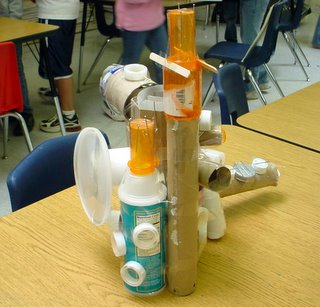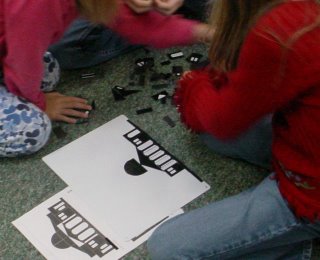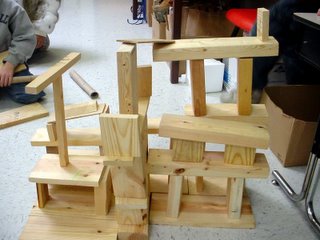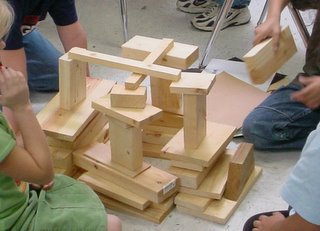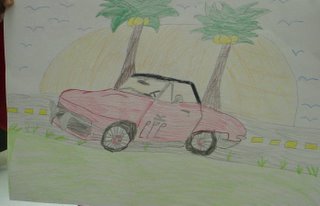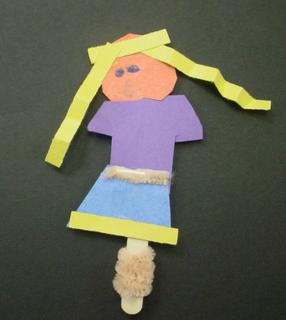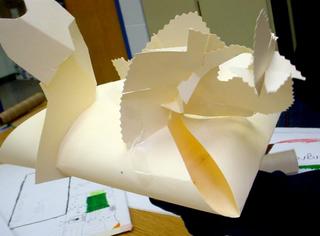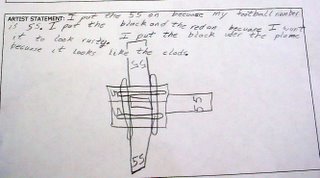
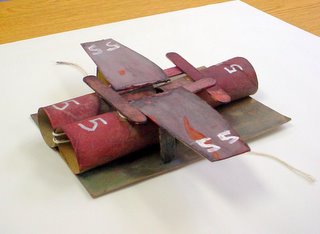
Before the winter break, we spent a couple of weeks discussing the steps used by an artist in his or her creative process. I like the words used by one of the other TAB-Choice teachers in hers, so I borrowed it. First we Explore (all of the stations and the materials available), then we Plan (what we want to make and what materials we will use), then we Create (the actual making of the art), then we Refine (look at our art to see if it needs anything else or if we need to make any changes), then we Reflect (this is when we write our artist statements). One of my goals this year has been to have the students reflect on what they have created and document it in an artist statement for every piece of art that they make. I think that this will help them to remember the steps in their creative process and then build on what they have learned in this piece on each new piece of their art. This is what I hope every student can take away from art: to know that they are creative thinkers who can solve, decide, create, and learn on their own. I think that this will also help them to realize the importance of their art work. In their artist statements, I ask them to document the steps that they took or tell the viewer what they were thinking about as they made their art work. If their art work is three-dimensional, I also ask them to draw a picture of it to have a record in their portfolios. Three-dimensional art must be taken home when it is completed because of our limits on storage in the art room.
Tyler's airplane is an example of a finished product that shows careful planning, refining, and reflecting.


